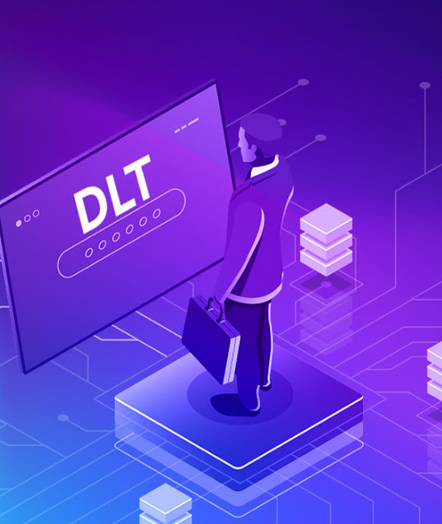Understanding the Difference Between Blockchain and Distributed Ledger Technology
In today’s fast-evolving digital world, distinguishing between emerging technologies can be challenging. Many businesses and individuals use buzzwords like “Blockchain” to market products, leading to confusion, especially among those unfamiliar with the tech. While both Blockchain and Distributed Ledger Technology (DLT) share common elements, they are not identical. This post will clarify their differences and explore how each technology works, along with real-world examples.
What is Blockchain?
Blockchain is often synonymous with cryptocurrencies like Bitcoin, but it’s much more than just a cryptocurrency platform. A blockchain is essentially a secure, decentralized database used to record transactions. Think of it as a shared document, where each new entry depends on the one before it. The security and verification processes in place ensure that data can’t be tampered with, and all transactions are encrypted.
The name “blockchain” comes from the structure of the system, where data is stored in blocks that are linked together in a chain. Each block in the chain contains a batch of transaction data, and the chain is continually updated as new transactions occur.
How Does Blockchain Work?
Blockchain operates through a series of data blocks. These blocks are sequentially linked, which is why the system is referred to as a “chain.” Every transaction made within a blockchain network is verified using encryption software, which prevents alterations or deletions. This setup ensures that the network is highly secure and transparent, as multiple devices and users hold copies of the blockchain and validate transactions.
What is Distributed Ledger Technology (DLT)?
Distributed Ledger Technology, on the other hand, is a broad category of decentralized databases that are distributed across several computers or nodes. Each node holds a copy of the ledger, ensuring that all participants have access to the same data, and updates are made independently across each node.
Verification of transactions in DLT is carried out through a consensus mechanism. Some systems allow every node to participate in the consensus process, while others have more restricted participation depending on the rules of the specific ledger. Unlike Blockchain, which uses blocks to structure its data, DLT doesn’t necessarily require blocks or a specific sequence for storing information.
Types of Distributed Ledger Technology (DLT)
While Blockchain is the most popular example of DLT, there are other forms of distributed ledgers. These can be classified into public, private, and consortium ledgers. Public DLTs rely on the consensus of all participants to validate transactions, while private DLTs are more controlled and permissioned, typically used for business applications. Consortium ledgers are a hybrid, where multiple entities collaborate to govern the network.
Key Differences: Blockchain vs. Distributed Ledger Technology
- Data Structure
Blockchain uses a block structure to store transaction data, where each block is linked to the previous one, creating a chain. Distributed ledgers, however, do not require this block structure. Instead, the data can be stored in various formats and structures across different nodes. - Sequence of Data
Blockchain data is strictly arranged in a specific order, while DLTs don’t have to maintain any particular sequence. This gives DLT more flexibility in handling data. - Consensus Mechanisms
Blockchain typically uses power-intensive consensus mechanisms like Proof of Work (PoW) to verify transactions, which can slow down the system. In contrast, DLTs can employ various consensus mechanisms that are more energy-efficient and scalable. - Tokens and Cryptocurrencies
Blockchain networks often rely on tokens or cryptocurrencies to manage and verify transactions. In DLTs, tokens are not always necessary unless there’s a need to prevent spamming or perform anti-fraud checks. Blockchain networks, particularly those like Bitcoin, require tokens to incentivize participants and secure the network. - Scalability
DLT systems are more scalable because they don’t rely on resource-heavy consensus mechanisms like blockchain does. Blockchain’s energy-intensive methods, such as Proof of Work, can limit its scalability and efficiency, whereas DLTs can scale more easily without sacrificing performance.
Real-World Use Cases of Blockchain and DLT
Both Blockchain and DLT have found applications in various industries. Here are some examples:
- Banking and Financial Services
Financial institutions have embraced blockchain for digital transactions, cross-border payments, and even for managing digital identities. Similarly, DLT is being tested in sectors like insurance for claims management and financial contracts. - Internet of Things (IoT)
Blockchain is increasingly seen as a valuable solution for IoT connectivity, offering increased security and faster transaction processing. It allows devices in the IoT ecosystem to trust each other without needing centralized intermediaries. - Supply Chain Management
Blockchain provides transparency and traceability in supply chains. By using blockchain, companies can track the journey of products from creation to delivery, ensuring accuracy and reducing fraud. DLTs are also being used to improve logistical operations and manage product authentication.
Conclusion
While Blockchain and Distributed Ledger Technology share many similarities, they are distinct technologies with different use cases and structures. Blockchain, a subset of DLT, brings a higher level of security and transparency by using blocks of data that are securely linked. However, DLT offers more flexibility and scalability, making it a suitable choice for many business applications that don’t require the block structure of Blockchain.
In the end, both Blockchain and DLT hold tremendous potential to transform industries, and understanding their key differences will help businesses leverage their capabilities effectively. Blockchain has undoubtedly taken DLT to the next level, but the two technologies continue to evolve and complement each other in various real-world applications.
Recent Posts
- How AI is Revolutionizing Architectural Design: A Look at Tools, Trends, and the Future
- Streamlining Cyber Risk Assessments Through Automation
- Understanding the Difference Between Blockchain and Distributed Ledger Technology
- Is Bitcoin Mining Still a Viable Venture in 2025?
- Exploring AI: Unveiling Possibilities, Challenges, and Future Implications

